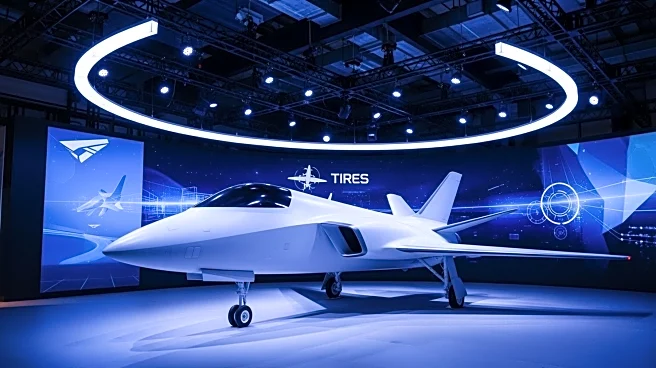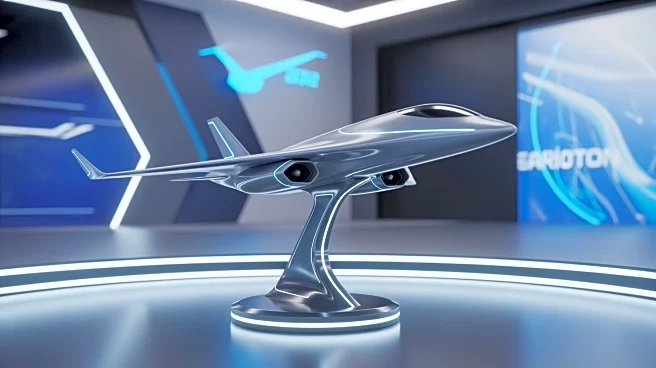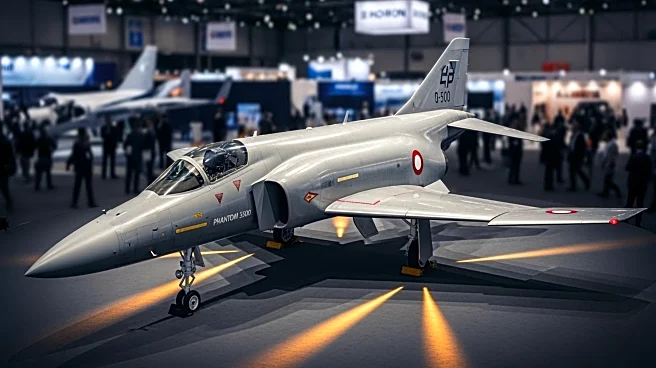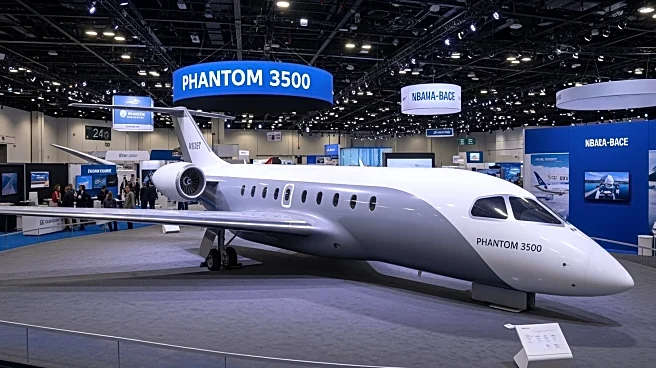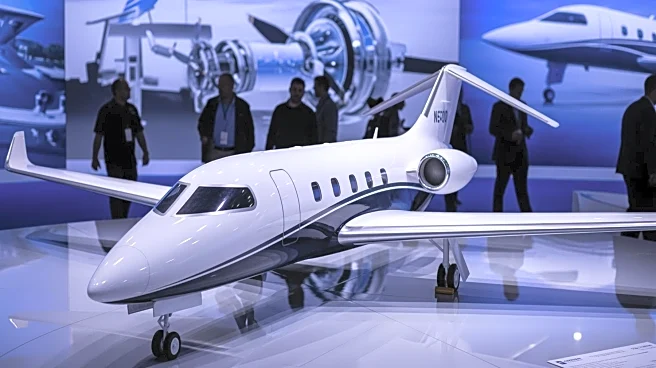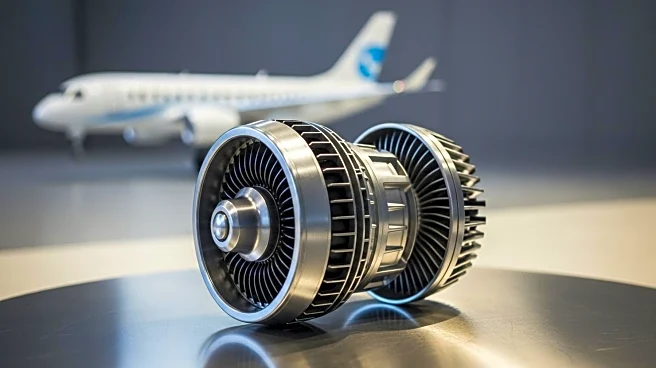What's Happening?
The NBAA-BACE Exhibition is currently showcasing a mock-up of Otto Aerospace's Phantom 3500 midsize jet. This aircraft is designed with an unconventional configuration, featuring a laminar flow wing and
fuselage aimed at reducing drag. The Phantom 3500 is expected to make its first flight in late 2027, with certification anticipated by 2030. The exhibition provides a platform for industry professionals to view and discuss the innovative design and potential impact of this new aircraft model.
Why It's Important?
The introduction of the Phantom 3500 jet represents a significant advancement in aircraft design, particularly in terms of aerodynamic efficiency. The laminar flow wing and fuselage are expected to reduce drag, potentially leading to improved fuel efficiency and lower operational costs for airlines. This innovation could influence future aircraft designs and contribute to more sustainable aviation practices. The exhibition serves as a critical venue for industry stakeholders to evaluate the potential benefits and challenges associated with adopting such technology.
What's Next?
As Otto Aerospace progresses towards the first flight of the Phantom 3500 in 2027, industry observers will be keenly watching for developments in its testing and certification process. The success of this aircraft could prompt other manufacturers to explore similar aerodynamic innovations. Airlines and aviation companies may begin to consider integrating such designs into their fleets, potentially reshaping the competitive landscape of the aviation industry.
Beyond the Headlines
The development of the Phantom 3500 could have broader implications for the aviation industry, including regulatory considerations related to new aircraft designs. The focus on reducing drag and improving fuel efficiency aligns with global efforts to reduce carbon emissions and promote environmental sustainability. This could lead to increased pressure on manufacturers to innovate and comply with evolving environmental standards.
